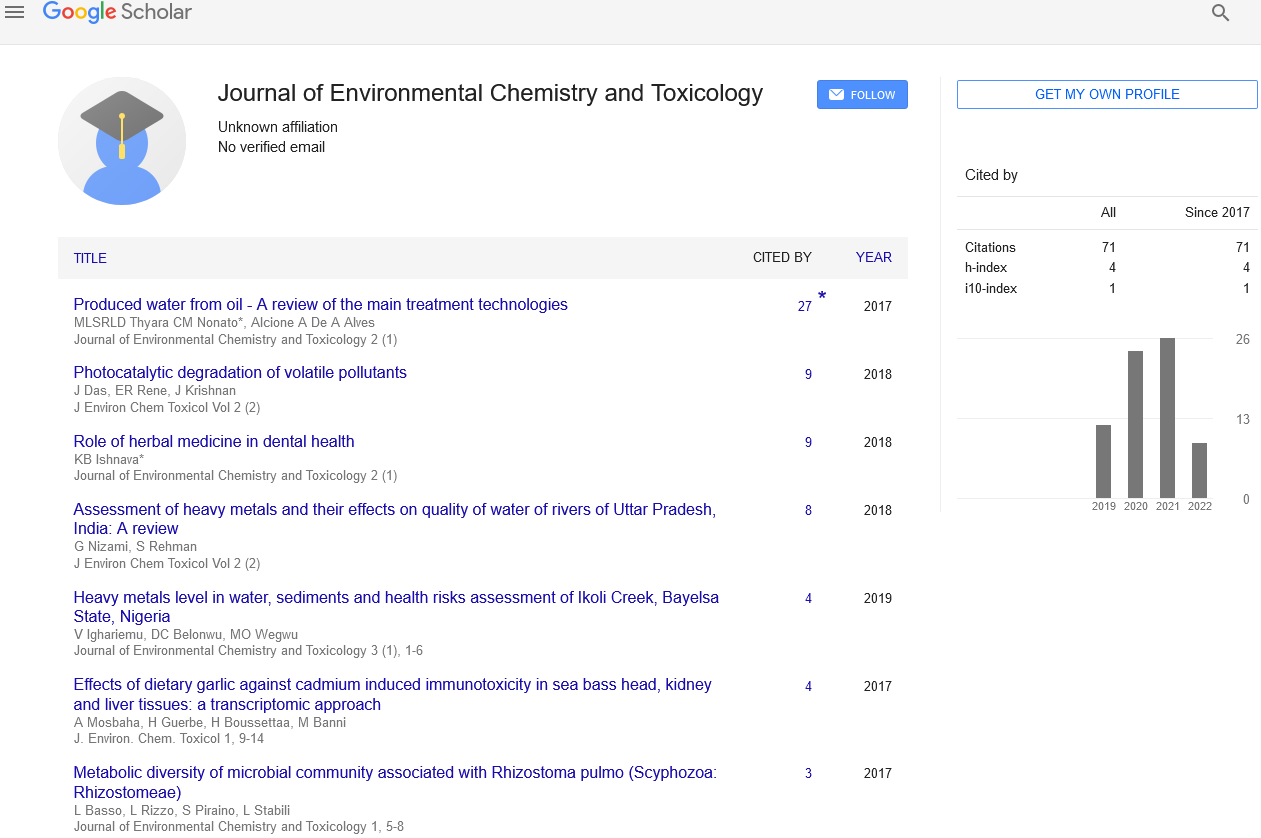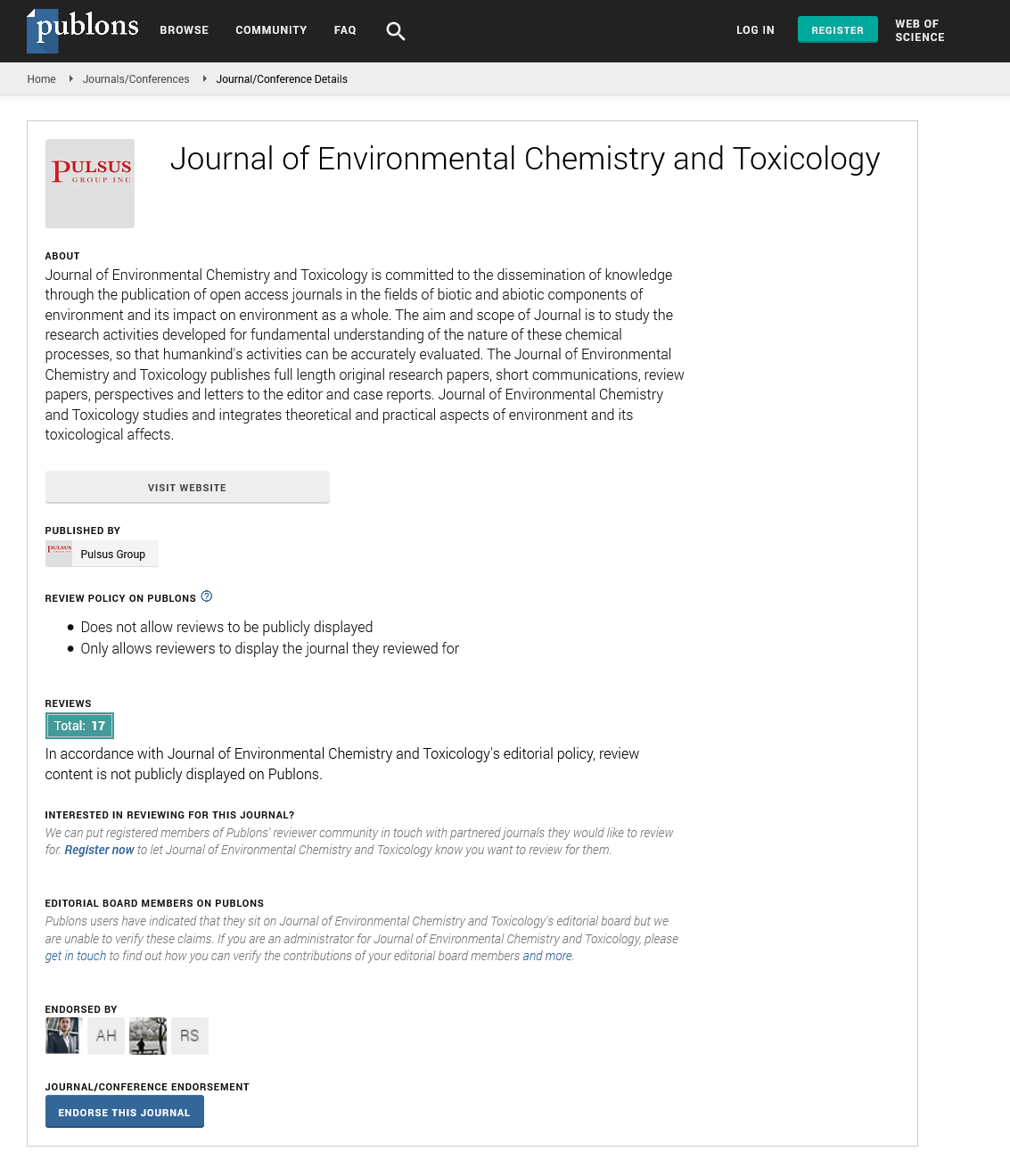Contamination of Heavy Metals and Pesticides
Received: 14-Jul-2021 Accepted Date: Jul 23, 2021; Published: 28-Jul-2021
Citation: Sushobhan P. Contamination of Heavy Metals and Pesticides. J Environ Chem Toxicol 2021;5(4):1.
This open-access article is distributed under the terms of the Creative Commons Attribution Non-Commercial License (CC BY-NC) (http://creativecommons.org/licenses/by-nc/4.0/), which permits reuse, distribution and reproduction of the article, provided that the original work is properly cited and the reuse is restricted to noncommercial purposes. For commercial reuse, contact reprints@pulsus.com
Perspective
The environment is growing more contaminated as a result of massive economic expansion and quick growth in many industries, such as agriculture and industry. Toxic compounds that infiltrate the environment from both anthropogenic and natural sources are referred to as environmental contaminants. Certain environmental processes, such as synthetic industries, coal conversion, and waste burning, pose risks to abiotic elements (water, air, and soil) and biotic communities (animals, plants, and humans). Heavy metals and pesticides are common examples of environmental toxicants, and they pose a major threat to the ecosystem’s function and structure. Heavy metals are naturally metals with a high atomic weight and a density more than 5 g/cm3. In comparison to their physical properties, heavy metals’ chemical properties are the most practical. Think tanks around the world are paying closer attention to environmental toxicity that exceeds standard maximum residue limits. Cadmium, lead, copper, and zinc all contribute to a frightening array of environmental and health issues. Heavy metals are produced in a variety of ways, including industry, mining, and agriculture. In the agricultural sector, sources can be classified as fertilization, insecticides, livestock dung, and wastewater.
Heavy metal pollution in the environment has recently increased significantly, causing havoc, particularly in the agricultural sector, by accumulating in the soil and in plant absorption. The heavy metals contamination problem has grown urgent, necessitating bold and realistic measures to mitigate the risks as much as possible. Despite the fact that heavy metals are required by various organs in both plants and humans, they become poisonous when their concentration exceeds a certain level. Many researches have been conducted in this field, with the findings that agriculture, mining, agrochemicals, and industry are the principal suppliers of heavy metals. It has been noted that agriculture and industry have a substantial influence on heavy metal pollution in agricultural soil and plants, particularly soils near cement and electroplating plants. In other words, the soil surface provides a fertile site for heavy metals to accumulate before being absorbed by the roots and transferred to the plants via the vascular system.
Heavy metal build up can be thought of as an assemblage of materials in the ecosystem. Heavy metal ions transferred from the soil must come into touch with plant roots. They have a tendency to consolidate and link contaminants in the soil, decreasing their bioavailability. Heavy metal transmission processes include phytoextraction, phytostabilization, and rhizofiltration. These metals affect plants and have the potential to impair human health through transference in the food chain. Because of the rapid expansion of technology, the ecosystem and humans have recently been exposed to a variety of chemical toxicants, most notably pesticides (herbicides, insecticides, and fungicides). Pesticides are characterized by scientists as synthetic chemical compounds that are used to manage pests in a variety of applications, including agriculture. As a result, pesticides are regarded as efficient, costeffective, and effective weapons in integrated pest management systems. Pesticides are bioaccumulating in food chains as a result of uncontrolled use, posing a substantial risk to mammals and other non-target creatures. Furthermore, the direct or indirect effect of pesticides on non-target organisms causes an imbalance in the surrounding environment.






